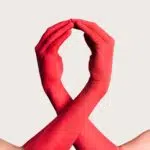First recognized in 1988, World AIDS Day falls on December 1 each year. World AIDS Day is dedicated to spreading awareness of the AIDS pandemic spread by the spread of HIV infection, and to mourning those who have died of the disease. An estimated 40 million people worldwide have died of AIDS since 1981, and an estimated 37 million are living with HIV, making it one of the most important global public health issues in recorded history. Despite recent improvements in treatment, the AIDS epidemic still claims an estimated two million lives each year, of which more than 250,000 are children.
History of World AIDS Day
Initiated in 1998 and observed on December 1, World AIDS Day was the first time ever a health day was observed globally. The day is an opportunity for everyone around the world to come together in the fight against the disease and stand in solidarity to support those suffering from HIV, as well as remember those who lost their lives to this illness. The idea to observe World AIDS Day was conceived to make the most of a media gap between the U.S. presidential elections of 1988 and Christmas. Broadcast journalist James Bunn, who had newly taken a post at the World Health Organization, believed that after a year of election campaigns, the public would be drawn to coverage of AIDS on air. Along with his colleague Thomas Netter, Bunn assessed December 1 as the ideal date for the observance and spent the following 16 months planning and executing the inaugural event. The theme of the first World AIDS Day was centered on children and youth, to create greater awareness amongst the target age bracket, and the impact of AIDS on their lives and their families. It was also made apparent that AIDS was not limited to commonly stigmatized groups such as drug users. From 1996 onwards, the observance of World AIDS Day was taken over by the United Nations Programme on HIV/AIDS, expanding the campaign to an annual education and prevention campaign. The World AIDS Campaign was registered as a nonprofit organization in 2004 in the Netherlands.
World AIDS Day timeline
The HIV-1 strain of virus emerged to circulate in Kinshasa, closely related to a virus found in chimpanzees
The U.S. Centers for Disease Control and Prevention reports on AIDS for the first time
According to “The New York Times,” one million Americans are affected by HIV this year.
AZT (zidovudine) is the first drug available to treat HIV.
12 of 75 people treated in a French study were “functionally cured” of HIV, not experiencing a return of the virus even after stopping antiretroviral therapy.
World AIDS Day FAQs
Why do we celebrate World AIDS Day?
It’s an opportunity for people worldwide to unite in the fight against HIV, to show support for people living with HIV, and to commemorate those who have died from an AIDS-related illness. Founded in 1988, World AIDS Day was the first-ever global health day.
Which date is known as World AIDS Day?
On December 1 each year, organizations and individuals across the world bring attention to the HIV epidemic, endeavor to increase HIV awareness and knowledge, speak out against HIV stigma, and call for an increased response to move toward Ending the HIV Epidemic: A Plan for America.
What does the red ribbon symbolize for World AIDS Day?
The red ribbon is the universal symbol of awareness and support for people living with HIV. Wearing a ribbon is a great way to raise awareness on and during the run-up to World AIDS Day.
How to Observe World AIDS Day
-
Wear a red ribbon
Wearing a red ribbon in your lapel is the most broadly recognized way of showing your support on World AIDS Day. Red symbolizes blood, and the pain caused by the disease, anger about global inaction to fight the epidemic, a warning to take the disease seriously, and a symbol of love, passion, and tolerance towards those affected by the disease. Check online to find a ribbon supplier that supports a charitable cause.
-
Donate to an AIDS charity
There are a host of national and international nonprofits devoted to fighting the disease and problems associated with its spread. Check online and consider whether you’d like to support an organization in the United States, where deaths have been declining since the mid-1990s but infection continues to affect thousands of people each year, or perhaps an organization focused on infection in Sub-Saharan Africa, where Adult HIV Prevalence has reached 1 in 20 people and 1.2 million people die of HIV/AIDS each year.
-
Attend a candlelight vigil
Most major cities in the U.S. host candlelight vigils on World AIDS Day as a way of visually commemorating those lost to the disease and vowing to fight it in the future. Check online to find a vigil near you and head along to show your support. Don’t forget to share your experience on social media to ensure that the idea is brought to the front of mind for your friends, and to demonstrate your support.
5 Surprising Facts About AIDS
-
HIV originated from Chimps
The human immunodeficiency virus originated from viruses in chimpanzees and monkeys.
-
You don’t always feel sick
HIV may not show symptoms for years and it is possible to be infected for a decade and feel absolutely fine — transmission of the infection during this time is still possible.
-
Many people don't know they have it
The Centers for Disease Control and Prevention estimates that one in five people living in the U.S. don't know they have the virus.
-
Minorities are infected more
New cases of HIV infection are most prevalent in minority groups — this is due to a variety of factors, including lack of education, poverty, and stigma.
-
Children are just as much in danger
By the end of 2011, 3.3 million children around the world were living with HIV.
Why World AIDS Day is Important
-
AIDS impacts everyone
In its early years, some criticized World AIDS Day for focusing on children and young people, but organizers aimed to alleviate some of the stigma surrounding the disease as primarily affecting gay men, boosting recognition of it as a family disease. HIV/AIDS is the leading cause of death among women of reproductive age, globally, and of 1.8 million new HIV infections in 2016, 43% were among women.
-
Getting to zero
Since 2012, the multi-year theme for World AIDS Day has been achieving zero new HIV infections, zero deaths from AIDS-related illnesses, and zero discrimination. In 2016, new infections among young women aged 15 to 24 were 44% higher than they were among men in the same age group, which suggests the high profile AIDS-related deaths of male celebrities such as Freddie Mercury, Robert Mapplethorpe and Rock Hudson have continued to overshadow realities of new infection rates amongst women in the public imagination. World AIDS Day seeks to challenge those perceptions and protect everyone.
-
Equalizing access to treatment
Research shows that stigma associated with sex work and LGBT populations, internationally, is a growing factor in unequal access to effective treatment. International AIDS funding began to fall for the first time in 2015, but still, less than half of those suffering from HIV/AIDS have access to anti-retroviral treatment across the world. It’s never been more important to draw attention to the inequalities in treatment, in order to stop its spread once and for all.
World AIDS Day dates
| Year | Date | Day |
|---|---|---|
| 2022 | December 1 | Thursday |
| 2023 | December 1 | Friday |
| 2024 | December 1 | Sunday |
| 2025 | December 1 | Monday |
| 2026 | December 1 | Tuesday |
















































